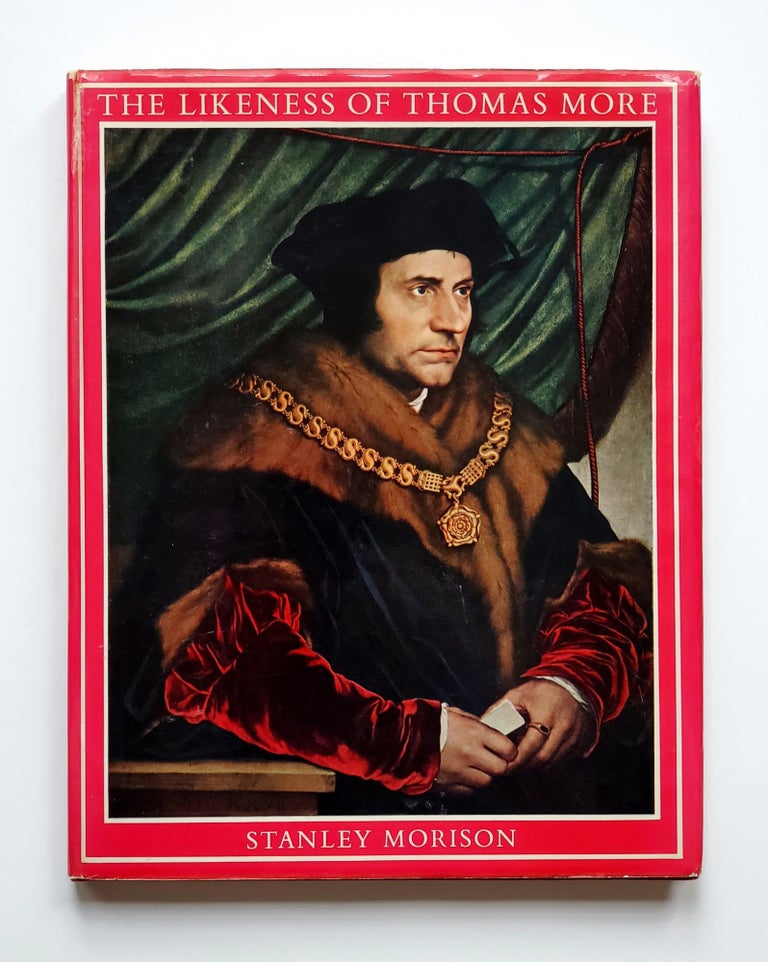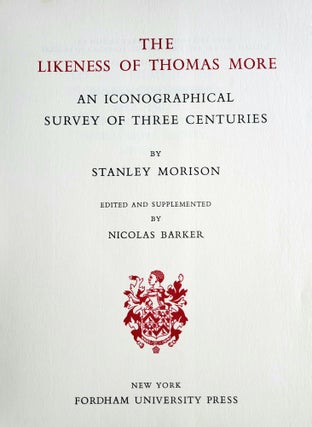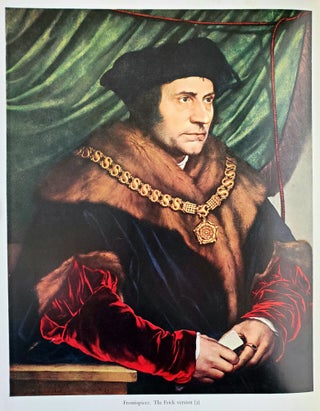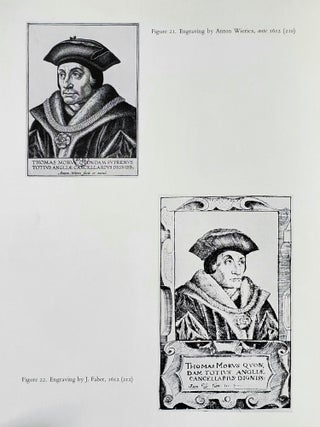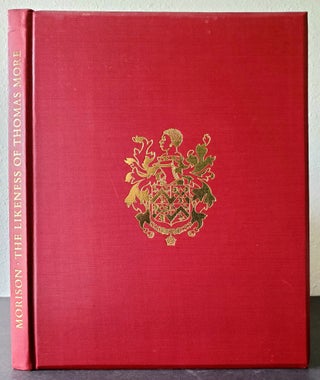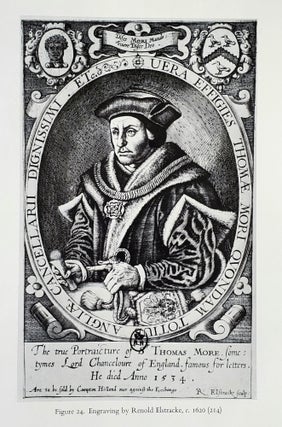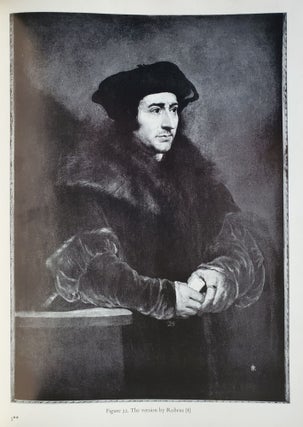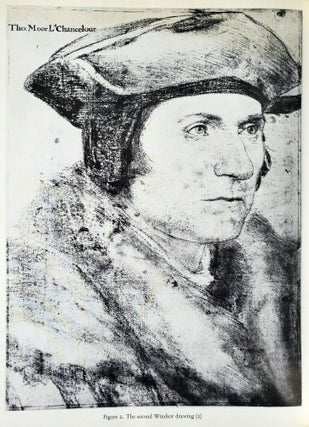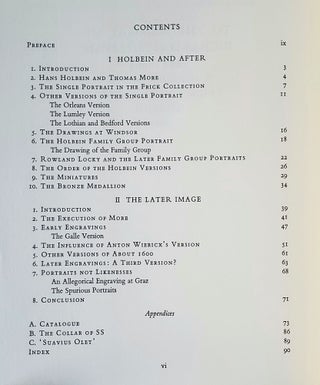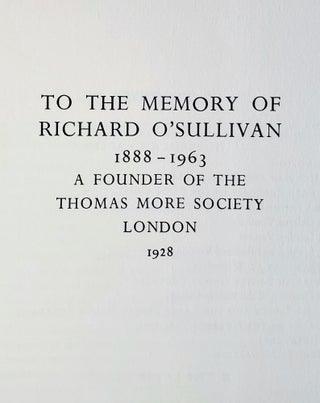The Likeness of Thomas More; An Iconographical Survey of Three Centuries
New York: Fordham University Press, 1963. First edition. Quarto (11 3/4 inches tall), original dark red beveled cloth boards, gilt spine with gilt vignette to front board, pink endpapers, dark red top edge, uncut, original dust jacket. Book fine, scrape to blank rear panel of price-clipped dust jacket. A near-fine copy. Item #760
"THE STRENGTH OF THE MEMORY OF MORE AND WHAT HE STOOD FOR IN TIMES WHEN IT WAS DANGEROUS TO SPEAK HIS NAME"
First American edition of Stanley Morison's "investigation of the portraiture" of Thomas More—an elegant book in the bold original dust jacket reproducing the famous portrait by Hans Holbein. A stellar copy of a beautiful book.
Sir Thomas More was noticeably absent at the coronation of Anne Boleyn as the Queen of England in June 1533. This act of defiance by the recent Lord Chancellor (October 1529 to May 1532) set in motion a chain of events which resulted in More's beheading two years later. Perhaps inspired by the contemporary success, on both the British and American stages, of Robert Bolt's A Man for All Seasons, this catalogue of images of the great Saint was printed in the U.K. and published by Burns and Oates ("Publishers to the Holy See") in Great Britain and Fordham University Press in the United States.
The text is divided into two main sections: I. "Holbein and After" and, II. "The Later Image," with a color frontispiece portrait, a title-page printed in red and black, and 42 illustrations. The illustrations include three contemporary depictions of More's martyrdom produced on the continent. The dust jacket reproduces the famous Holbein portrait, painted in 1527, depicting More wearing the livery Collar of SS (Esses).
The Appendices include: A. Catalogue, B. The Collar of SS, C. 'Suavius Olet.' Edited and supplemented by Nicolas Barker with Stanley Morison's short Preface, (dated, "July 10, 1963") and an errata leaf tipped in at page 36 The catalogue traces the developing nature of portraiture in the sixteenth and seventeenth centuries. The shifting images also reflect the changing religious and political attitudes about More: "Never, perhaps, has it fallen to the lot of a human being to have his features so tortured and perverted as More’s have been. At one time he is made to resemble a Turk; at another time, an Officer of the Inquisition. One artist decorates him with the robes of ‘Soliman the Great’; another takes care to put around him those of a mountebank or conjurer." By the eighteenth century, Thomas More had been transformed from a Papist villain to become an exemplar of the English nation, leading Samuel Johnson to declare: "He was the person of the greatest virtue these islands ever produced." Pope Pius XI canonized St. Thomas More in 1935. Dedicated "To the Memory of Richard O'Sullivan / 1888-1963 / A Founder of the Thomas More Society London 1928."
Price: $150.00

